Research Highlights
Research Highlights
A selection of highlights culled from publications by HAO staff.
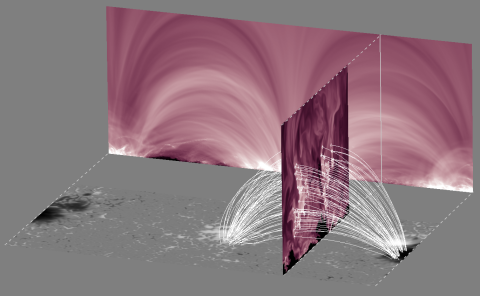
The Coronal Veil
Coronal loops, seen in solar coronal images, are believed to represent emission from magnetic flux tubes with compact cross sections. Anna Malanushenko, Matthias Rempel and others, examine the 3D structure of plasma above an active region in a radiative magnetohydrodynamic simulation to locate volume counterparts for coronal loops.
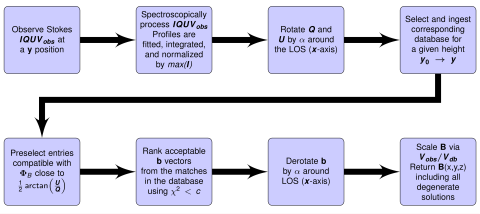
Efficient and Automated Inversions of Magnetically-Sensitive Forbidden Coronal Lines: CLEDB - The Coronal Line Emission DataBase Magnetic Field Inversion Algorithm
Alin Paraschiv and Philip Judge present CLEDB, a single point inversion algorithm for determining magnetic parameters using spectro-polarimetric measurements of emission lines formed in the solar corona.
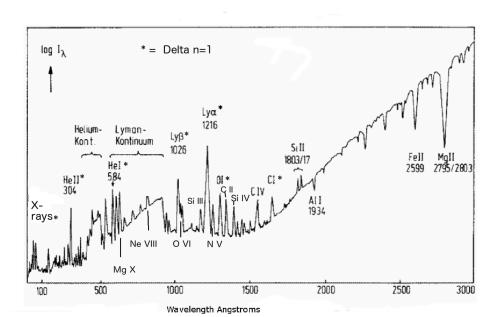
Optimal spectral lines for measuring chromospheric magnetic fields
This paper identifies spectral lines from EUV to infrared wavelengths which are optimally suited to measuring vector magnetic fields as high as possible in the solar atmosphere.

Effects of spectral resolution on simple magnetic field diagnostics of the Mg II h & k lines
Rebecca Centeno, Matthias Rempel, Roberto Casini, and Tanausu del Pino Aleman study the effects of finite spectral resolution on the magnetic field values retrieved through the weak field approximation (WFA) from the cores of the Mg II h&k lines.
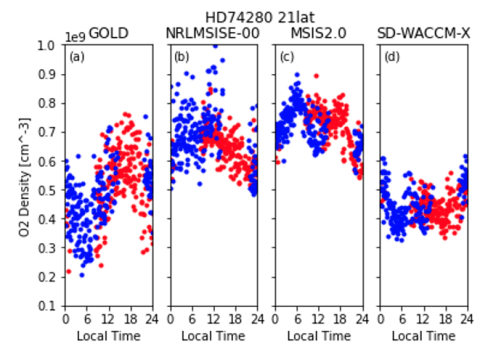
The Molecular Oxygen Density Structure of the Lower Thermosphere as Seen by GOLD and Models
This paper compares new observations from the Global-scale Observations of Limb and Disk (GOLD) mission of molecular oxygen (O2) in the lower thermosphere (130 - 200 km in altitude) to widely used models in the aeronomy community.
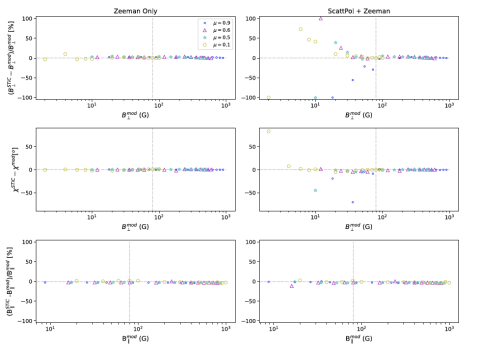
On the (Mis)interpretation of the Scattering Polarization Signatures In the Ca II 8542 A line Through Spectral Line Inversions
Scattering polarization tends to dominate the linear polarization signals of the Ca II 8542 A line in weakly magnetized areas, especially when the observing geometry is close to the limb. In this paper we evaluate the degree of applicability of existing non-LTE spectral line inversion codes at inferring the magnetic field vector and, particularly, its transverse component.
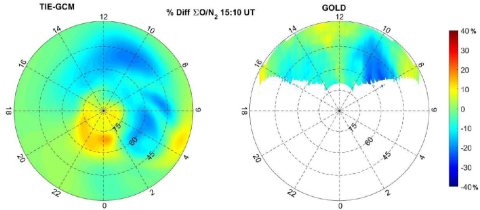
The effects of IMF By on the middle thermosphere during a geomagnetically “quiet” period at solar minimum
Numerical simulations using the National Center for Atmospheric Research (NCAR) thermosphere-ionosphere-electrodynamics general circulation model (TIE-GCM) are performed to elucidate the effects of the interplanetary magnetic field (IMF) on the middle thermosphere composition during a “geomagnetically quiet” period.
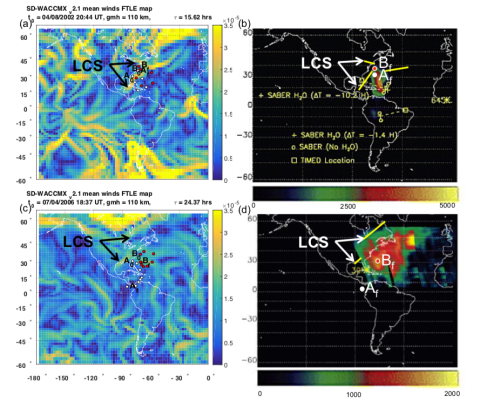
Lower thermospheric material transport via Lagrangian coherent structures
Lagrangian coherent structures (LCSs), indicating regions of material transport, are derived from models of the lower thermosphere for five space shuttle water vapor plume events. LCSs defined using flow fields from the Specified Dynamics version of the Whole Atmosphere Community Climate Model with thermosphere eXtension (SD-WACCMX) are compared to global ultraviolet imager (GUVI) observations of water vapor documented in the literature.
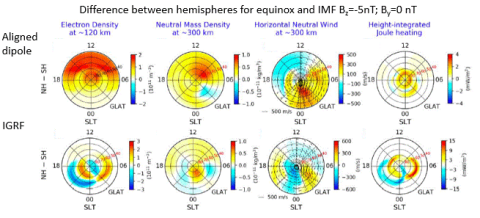
Impacts of Different Causes on the Inter–Hemispheric Asymmetry of Ionosphere–Thermosphere System at Mid– and High–Latitudes: GITM Simulations
There are significant differences between the Earth’s two hemispheres such as the Earth's magnetic field and the intensity of solar radiation due to Earth's tilt of the rotation axis with respect to the Sun. Understanding the impact and therefore the importance of these asymmetries on the mid- and high-latitude upper atmosphere is a challenge in the geospace community.